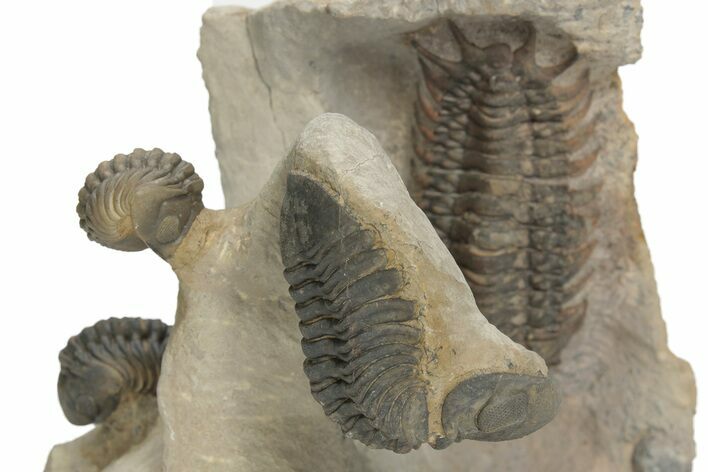This Specimen has been sold.
3.1" Crotalocephalus Trilobite With Three Reedops - Atchana, Morocco
This is a really displayable piece from the Lhandar Formation of Morocco. There are four trilobites, present on this aesthetically sculpted block of limestone. The largest trilobite is a 3.1" long Crotalocephalus, not to be confused with the common Crotacephalina from the same formation. They can be distinguished by the longer tail spines in Crotalocephalus. There are also three Reedops trilobites present on the piece. The base of the rock is fairly flat so it displays nicely without the need for a display stand.
About Trilobites
Trilobites are an extinct class of marine arthropods that thrived for nearly 270 million years, from the early Cambrian to the end of the Permian period (around 521 to 252 million years ago). They are one of the most successful and diverse groups in the history of life, with over 25,000 described species spanning a wide range of sizes, shapes, and ecological niches. Known for their distinctive, segmented exoskeletons, trilobites provide invaluable insights into the evolutionary history of arthropods and the dynamics of ancient marine ecosystems.
Trilobites are an extinct class of marine arthropods that thrived for nearly 270 million years, from the early Cambrian to the end of the Permian period (around 521 to 252 million years ago). They are one of the most successful and diverse groups in the history of life, with over 25,000 described species spanning a wide range of sizes, shapes, and ecological niches. Known for their distinctive, segmented exoskeletons, trilobites provide invaluable insights into the evolutionary history of arthropods and the dynamics of ancient marine ecosystems.
SPECIES
Crotalocephalus sp. & Reedops
LOCATION
Atchana, Morocco
FORMATION
Lhandar Formation
SIZE
Largest trilobite 3.1", Rock 5 x 5 x 3.5"
CATEGORY
SUB CATEGORY
ITEM
#210265
We guarantee the authenticity of all of our specimens.
 Reviews
Reviews
























